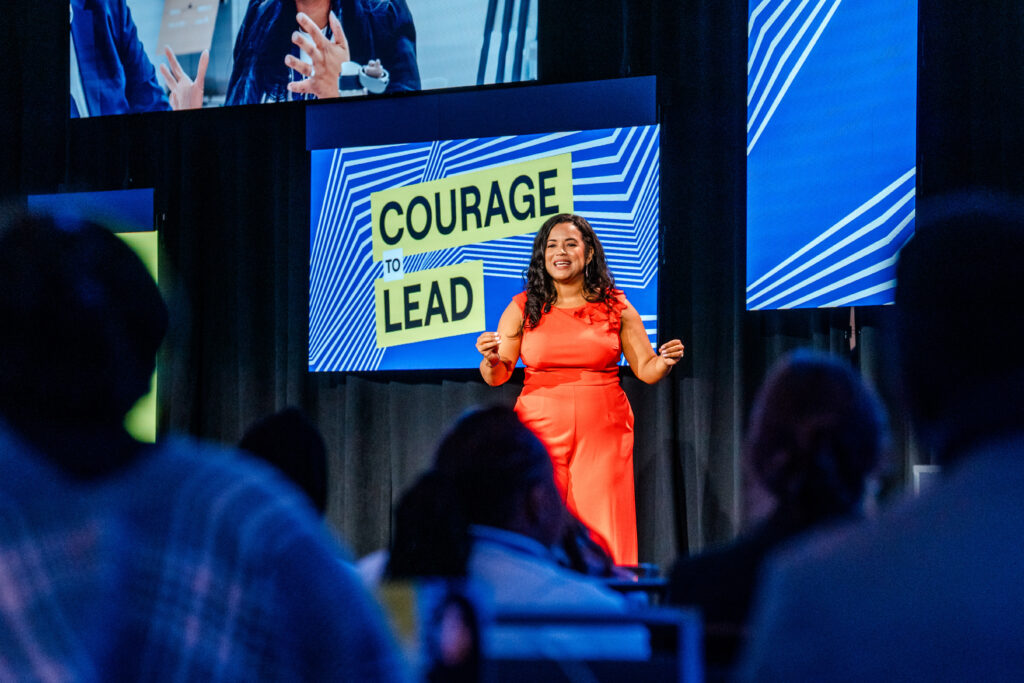These are exciting times for education entrepreneurship, technology, and the policy ecosystem that surrounds them both. Whether gauged by new school “startup weekends,” venture capital interest, or simply taking note of educators embracing digital tools, there is no question we are in a special moment. We may be on the verge of transformation that will radically redefine our instructional practices and improve learning outcomes – and make the education field one that our most talented individuals are eager to join.
Here at NewSchools Venture Fund, we are enthused by – and partially responsible for – the growing support for ed-tech resources that have the potential to transform public education. But we are also keenly aware of the challenges ahead. As Rocketship Education founder (and current ed-tech entrepreneur) John Danner has noted, there is a “valley of death” where “the vast majority of ed-tech companies die” as they attempt to grow from an early-stage organization to true scale.
There are a number of reasons this valley of death exists, but one major challenge identified by ed-tech organizations within and outside our portfolio surprised us: a lacking digital infrastructure. Whether a new blended learning elementary school such as Ingenuity Prep, a web-based platform to teach grammar like NoRedInk, or a third-party evaluator of high quality education apps such as eSpark, all share a basic need for reliable Internet connectivity in the classroom. The problem is that many, if not most, schools cannot provide enough broadband to support a truly robust blended learning environment. And this problem doesn’t just affect entrepreneurs, either. Teachers won’t innovate using digital instructional tools if they don’t have faith that they will actually work when students turn them on.
To unlock digital innovation in education, then, requires a serious and dedicated commitment to building the digital infrastructure “backbone” around which that innovation can take place. We believe that federal education policy can and should focus on helping states and school districts to build that infrastructure so that all students – whether in rural Alaska, suburban Maryland, or urban Detroit – have equal access to digital learning. Just as it took a national commitment to build the Interstate Highway System, so too will we need to make a national commitment to modernize the digital infrastructure of our entire school system to see it done.
At present, the most relevant federal policy supporting this effort is the federal e-Rate program. Authorized by Congress in 1996, e-Rate provides a portfolio of communications services to schools, including Internet services, and is overseen by the Federal Communications Commission. In many ways, e-Rate has been remarkably successful in helping wire up our schools, but as FCC Commissioner Jessica Rosenworcel recently noted, “roughly half of E-Rate schools access the Internet at speeds of 3 Megabits or less.”
Have you ever tried to watch a YouTube clip with only 3 Mbs of connectivity, when others are also trying to make use of the same network? It’s the digital equivalent of going to the dentist – painful.
We must do better. NewSchools Venture Fund is working with other advocacy organizations, including Education Superhighway, to build support for making US schools the most wired in the world. A recent Ed Week story on e-Rate helpfully summarizes the various components that a comprehensive redesign of e-Rate might entail, but for the moment we’re focusing on one particularly unique piece of the puzzle: building a new quasi-governmental agency staffed with experts that would provide direct services to school districts to help them build the network they need for digital learning.
We call this the Digital Depository (Digital Depository Concept Paper), and at its core it represents a reimagining of the federal role in education. As a result of the structure of our federalist system, most school districts never interact with the federal government in any meaningful way, other than through compliance exercises. What if we created a new entity, staffed by IT experts, that could help identify individual network needs and work directly with schools to design a comprehensive solution? What if our government focused on helping schools rather than monitoring them?
A well-informed skeptic might offer two objections to this plan. First, she might argue that in a nation with more than 14,000 school districts, a new Digital Depository would quickly be overwhelmed with demands on its services. And she’d be right! That’s why we’ve proposed making it a requirement that school districts form consortiums of a certain size – serving more than 50,000 students in aggregate, say – in order to access the Depository’s services. There is no reason we need to build 14,000 separate school district networks, each with its own peculiarities and administrators. The Depository thus creates a clear, though entirely voluntary, incentive for school districts to collaborate in an aggregate fashion.
Second, our well-informed skeptic might express some reservations as to whether a new public agency would really act any differently than most other public agencies – which is to say, bureaucratically and compliance driven. And she’d have a point! The reality is that we desperately need innovation within public-sector services in order to spur private innovation, particularly in education (which is and should remain a public good). To address this concern, we’ve proposed making the Digital Depository “quasi-governmental” in nature. For example, it would have an independent board of directors, some appointed by federal agencies, some by private business, and some by school districts themselves. Just as importantly, employees of the Depository would not be civil-service protected. Our hypothesis is that there are many smart engineers (think wealthy Google retirees) who wouldn’t mind doing a “service tour” to help schools, but have no desire to join a cumbersome federal bureaucracy tied to the federal GS pay scale. Like technology itself, the ethos that should pervade the Depository should be: smarter, nimbler, faster.
The Digital Depository is just one proposal to help build capacity to support schools – if you like the idea, please let our policy director know. But more importantly, we need to make it a national priority to build the digital infrastructure that ensures that every school, teacher and student in the US has equal access to digital learning. In the days ahead, expect to hear more from us as we help build a broad coalition in support of this goal.

